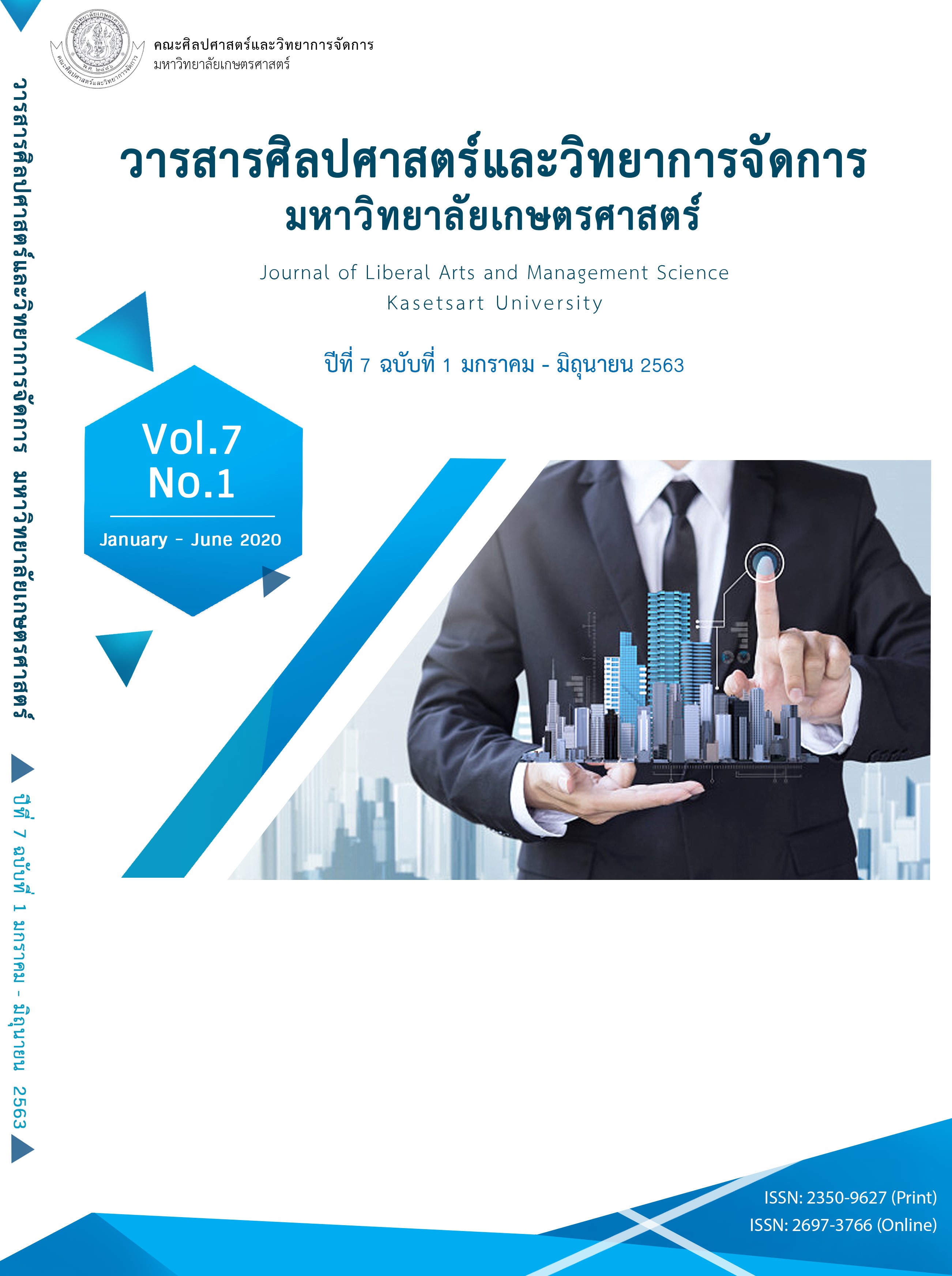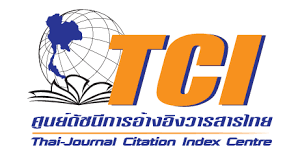THE PROBLEMS OF DIGITAL PHARMACEUTICAL MARKETING IN THAILAND FROM THE PERSPECTIVES OF STAKEHOLDERS
Keywords:
Digital Marketing, Pharmaceutical Business, Design ThinkingAbstract
This research aims to study and identify the problems of digital marketing of pharmaceutical business from stakeholders in Thailand through qualitative research. The sample group was purposively selected from those involved in digital pharmaceutical marketing over the past year. The sample consists of 3 subgroups, which are digital marketing target group of consumers and health professionals, digital marketing ethics control group and a group of digital marketers in the pharmaceutical business, a total of 53 informants. The research instrument is a semi-structural interview guideline for in-depth interviews. Data is transcribed for content analysis. The results show that consumers lack reliable and easy to understand information sources, need to consult with health professionals via digital media and medical knowledge and being tricked into buying fake drugs. The health professionals need for factual information for problem-solving and their concern about the medical information access of consumers. The digital marketing ethics controllers face high workloads, complex and cautious tasks, concern about the consumer safety from false advertising or covert sales of drugs, need for law change responding to the digital marketing, desire for accurate information from professionals as well as lacking digital marketing control from the beginning. The digital pharmaceutical marketing face regulatory limitations of advertising and challenges of digital communication to health professionals. The research findings suggest the development of online drug information sources, changing related laws and regulatory approaches of digital marketing as well as developing digital media literary for consumers and the ethics of digital marketers in the pharmaceutical business in Thailand.
References
กฤษณาพร ทิพย์กาญจนเรขา, ศิริธร ยิ่งเรงเริง, จันทิมา เขียวแก้ว, กันยารัตน์ อุบลวรรณ, เนติยา แจ่มทิม และ วรนาถ พรหมศวร. (2560). พฤติกรรมการแสวงหาข้อมูลสุขภาพจากสื่อออนไลน์และสื่อสังคมของผู้สูงอายุตามระดับการรับรู้ภาวะสุขภาพ. วารสารวิจัยทางวิทยาศาสตร์สุขภาพ, 11 (ฉบับพิเศษ), 12-22.
ฉลองศักดิ์ ศิริกันรัตน์. (2559). ปัญหาทางกฎหมายที่เกี่ยวกับการโฆษณาขายยาและผลิตภัณฑ์เสริมอาหารเวชภัณฑ์ทางการแพทย์และเครื่องสําอางผ่านเวบไซต์,วารสารนิติศาสตร์ มหาวิทยาลัยอัสสัมชัญ, 7(2), 113-128.
ชาติชาย วิริยะเจริญกิจ และ สุรัสวดี แสนสุข. (2562). มาตรการควบคุมอาวุธปืนในประเทศไทย: ปัญหาและแนวทางแก้ไข. วารสารศิลปศาสตร์และวิทยาการจัดการ มหาวิทยาลัยเกษตรศาสตร์, 6(2), 91-108.
ณพล ผลากรกุล และบุหงา ชัยสุวรรณ. (2559). ผลกระทบจากโฆษณาบนเฟซบุ๊ก และแนวทางการรู้เท่าทันสื่อโฆษณาบนเฟซบุ๊ก.วารสารการสื่อสารและการจัดการ นิด้า, 2(1), 18-42.
ณัฐธีรยา วิชกิจ และ อนันต์ ช่วยนึก. (2557). มาตรการทางกฎหมายเกี่ยวกับการควบคุมการโฆษณาผลิตภัณฑ์เพื่อสุขภาพและความงามบนอินเทอร์เน็ต. วารสารวิชาการบัณฑิตวิทยาลัย มหาวิทยาลัยราชภัฏสวนดุสิต, 10(1), 269-276.
นงนุช ใจชื่น, จิราภรณ์ กมลรังสรรค์ และ สุรศักดิ์ ไชยสงค์. (2560). สถานการณ์ ช่องว่างและโอกาสในการควบคุมการตลาดและการโฆษณาเครื่องดื่มแอลกอฮอล์ในประเทศไทย. วารสารวิจัยระบบสาธารณสุข, 11(1), 11-25.
ประกาย หมายมั่น. (2561). การสำรวจการขายยาผ่านเว็บไซต์ขายสินค้าซึ่งเป็นที่นิยมในประเทศไทย. วารสารเภสัชกรรมไทย, 11(2), 368-377.
สำนักยา กระทรวงสาธารณสุข. (2510). พระราชบัญญัติยา พ.ศ. 2510 และฉบับแก้ไข. สืบค้น 20 เมษายน 2563, จาก http://www.fda.moph.go.th/sites/drug/SitePages/AD-Rule01.aspx
ศูนย์วิจัยเศรษฐกิจ ธุรกิจและเศรษฐกิจฐานราก ธนาคารออมสิน. (2562). อุตสาหกรรมยา. สืบค้น 1 เมษายน 2563. จาก https://www.gsbresearch.or.th/gsb/economics/industrial-economics /industry-update/manufacturing/medicine/1744/
BizNews. (2563). ผู้บริโภคโปรดทราบ! ‘อาหาร/ ยา/ ผลิตภัณฑ์สุขภาพ’ พบ ‘ปัญหาโฆษณาเกินจริง’. สืบค้น 15 มีนาคม 2563. จาก http://www.bizpromptinfo.com/อาหาร-ยา-ผลิตภัณฑ์สุขภา/
Boruff, J. T., & Storie, D. (2014). Mobile devices in medicine: a survey of how medical students, residents, and faculty use smartphones and other mobile devices to find information. Journal of the Medical Library Association: JMLA, 102(1), 22-30.
Creswell, J.W. (2013). Qualitative Inquiry & Research Design: Choosing Among the Five Approaches. Thousand Oaks, CA: SAGE Publications, Inc.
Dam, R. & Siang, T. (2019). What is Design Thinking and Why Is It So Popular?. Retrieved April 20, 2020, from https://www.interaction-design.org/literature/article/what-is-design-thinking-and-why-is-it-so-popular
Dworkin, S. L. (2012). Sample size policy for qualitative studies using in-depth interviews. Archives of Sexual Behavior, 41(6), 1319-1320.
Girardi. (2017). The Evolving Role of Digital Marketing in Healthcare. Retrieved September 28, 2018, from https://www.evariant.com/blog/evolving-role-digital-marketing-healthcare
Jacobs, W., Amuta, A. O., & Jeon, K. C. (2017). Health information seeking in the digital age: An analysis of health information seeking behavior among US adults. Cogent Social Sciences, 3(1), 1-11.
Limbu, Y. B., McKinley, C., & Temperini, V. (2018). A Longitudinal Examination of FDA Warning and Untitled Letters Issued to Pharmaceutical Companies for Violations in Drug Promotion Standards. Journal of Consumer Affairs, 53(1), 3-23.
Mackey, T. K., Cuomo, R. E., & Liang, B. A. (2015). The rise of digital direct-to-consumer advertising?: Comparison of direct-to-consumer advertising expenditure trends from publicly available data sources and global policy implications. BMC health services
research, 15(1), 236.
Malterud, K., Siersma, V. D., & Guassora, A. D. (2016). Sample size in qualitative interview studies: guided by information power. Qualitative health research, 26(13), 1753-1760.
Pantelic, D. (2009). Internet as a Medium of Pharmaceutical Companies Promotional Activities. Management Information Systems, 4(1), 29-37.
Parekh, D., Kapupara, P., & Shah, K. (2016). Digital Pharmaceutical Marketing: A Review. Research. Journal of pharmacy and technology, 9(1), 108-112.
Roberts, J. P., Fisher, T. R., Trowbridge, M. J., & Bent, C. (2016). A design thinking framework for healthcare management and innovation. Paper presented at the Healthcare






